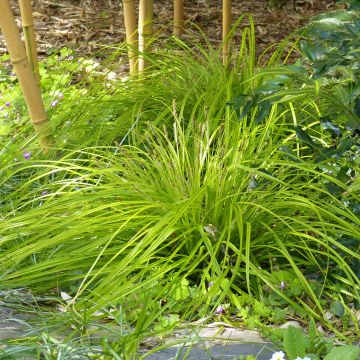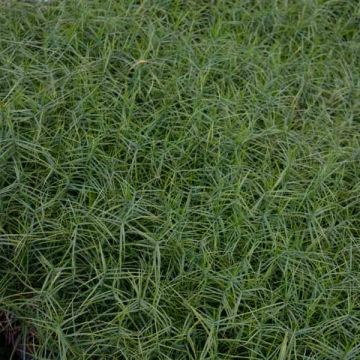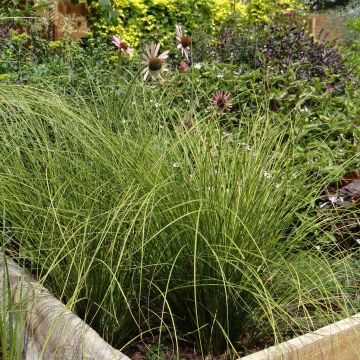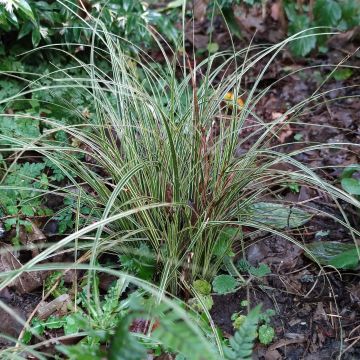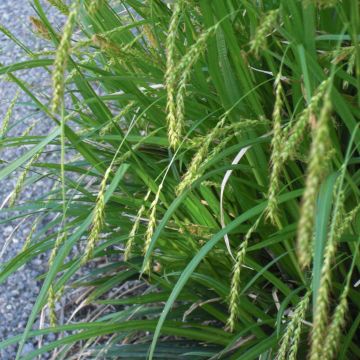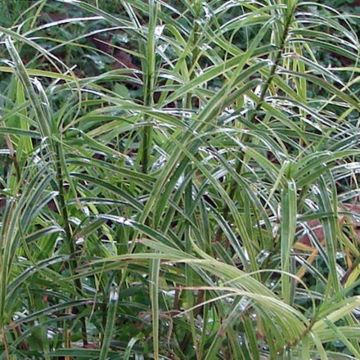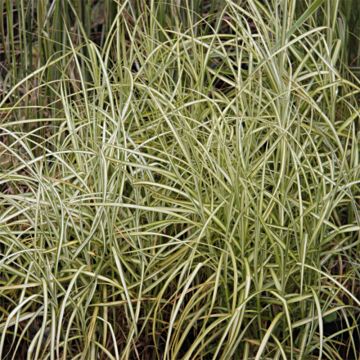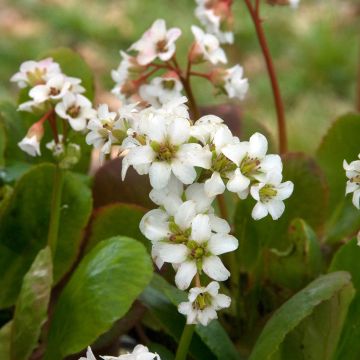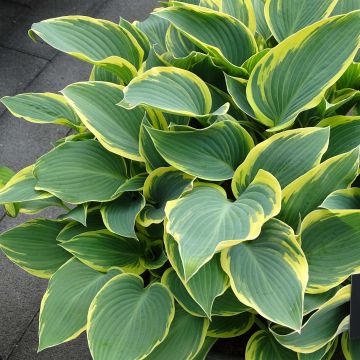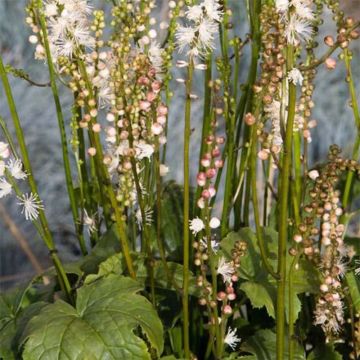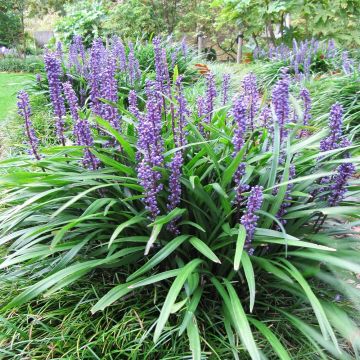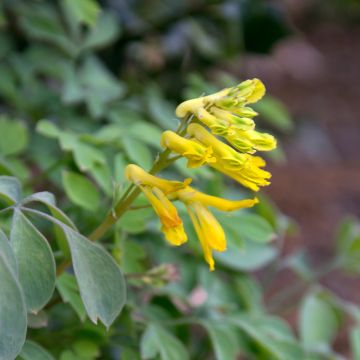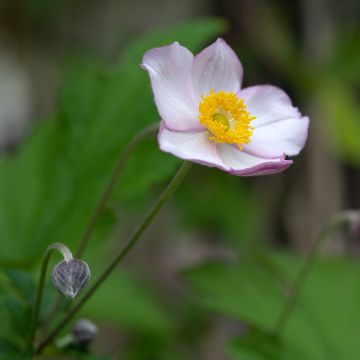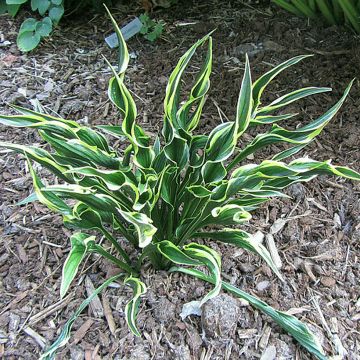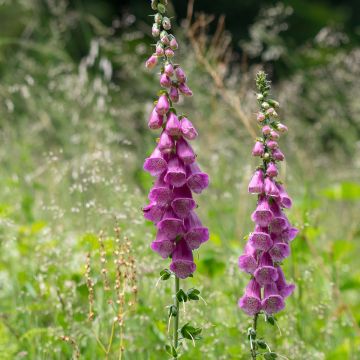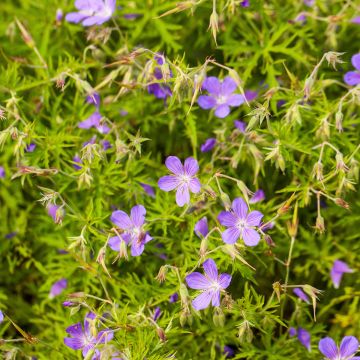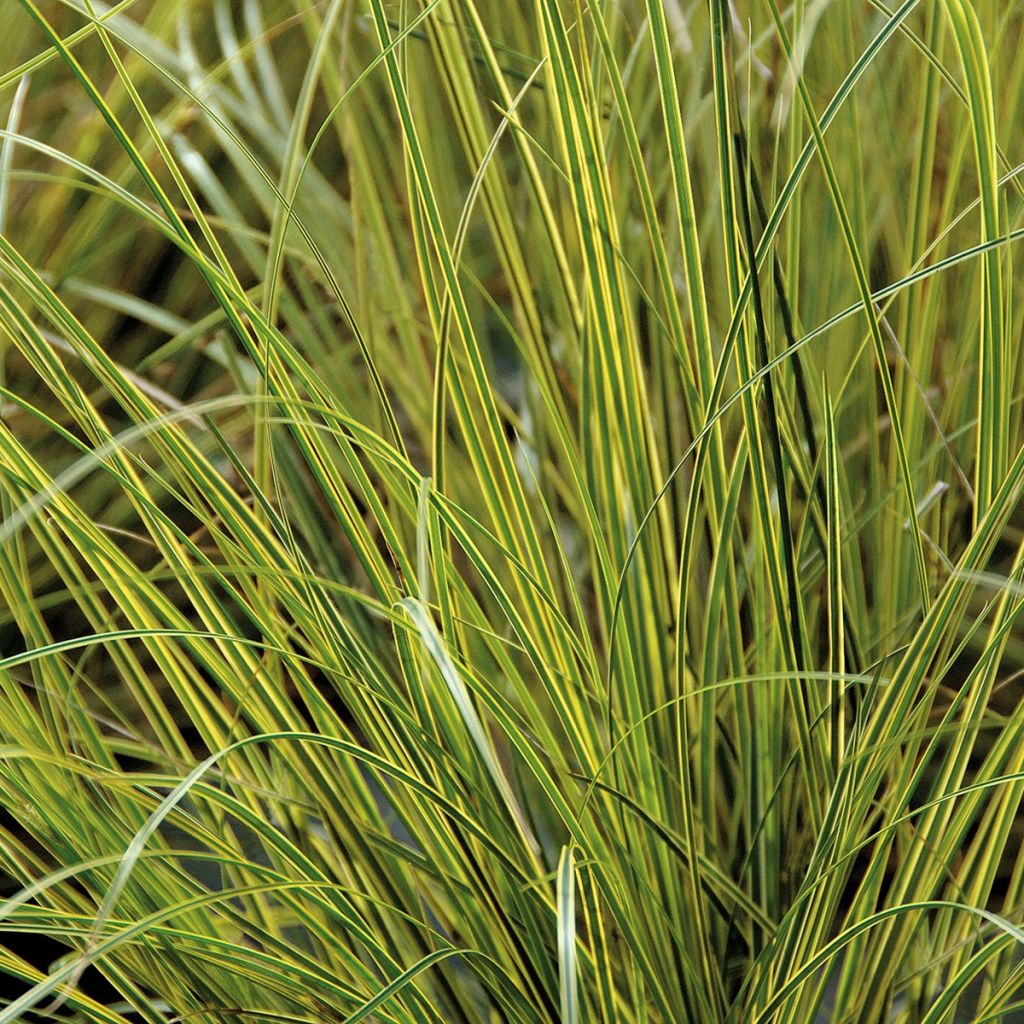

Carex brunnea Aureovariegata - Laîche panachée
Carex brunnea Aureovariegata
Carex brunnea Aureovariegata
Greater brown Sedge
This item cannot be shipped to the selected country
Delivery charge from €5.90
Delivery charge from €5.90
More information
Schedule delivery date,
and select date in basket
This plant carries a 12 months recovery warranty
More information
We guarantee the quality of our plants for a full growing cycle, and will replace at our expense any plant that fails to recover under normal climatic and planting conditions.
From €5.90 for pickup delivery and €6.90 for home delivery
Express home delivery from €8.90.
From €5.90 for pickup delivery and €6.90 for home delivery
Express home delivery from €8.90.
Does this plant fit my garden?
Set up your Plantfit profile →
Description
Carex brunnea 'Aureovariegata' is a variety of sedge that is distinctly variegated with cream to golden yellow. This small grass, which persists in winter, is both refined and bright, with undeniable sculptural appeal. It forms a tuft of upright foliage that looks proud in partial shade, where it finds the coolness it appreciates. Its discreet summer flowering takes the form of small white-cream spikes that turn brown with age. Elegant and versatile, this variety will make a great impression as a border plant, in a cool rock garden, by a pond, in a pot on a balcony, or even as an indoor plant in a cool room. Plant it in partial shade in moist to wet soil, preferably humus-rich.
Carex brunnea 'Aureovariegata' belongs, like all sedges, to the large Cyperaceae family. It is native to Asia (Japan). This small grass with short rhizomes forms a fairly flexible, slightly hairy, dense, upright tuft, measuring about 35 to 40cm (14 to 16in) in all directions. Its rootstock slowly spreads without becoming invasive. Its leaves are evergreen if not exposed to severe frost. They are slightly arched and sheath at the base. They measure about 4mm (1in) wide and approximately 35cm (14in) long. Their margins are tapered and their tips barely trailing. They have a fairly light green colour, finely edged with golden yellow to cream throughout their length. In July-August, short cream spikes measuring 2 to 4cm (1 to 2in) appear among the foliage on slender stems about 40cm (16in) tall. At maturity, they turn brown. This carex can tolerate temperatures as low as -8 to -10°C (17.6 to 14°F).
Carex brunnea 'Aureovariegata' is an elegant, minimalist plant that appreciates cool, semi-shaded environments. Its sculptural design does not require the presence of another plant by its side. However, this plant will bring lightness to the lush foliage of Rodgersias, the plumes of German ferns, and will also pair well with colourful Heucheras. Since this grass appreciates moist to wet soils, it will naturally find its place in a cool rock garden, a water garden, among mossy stones on riverbanks, or on the edge of a water feature. Also, place it along the borders of perennial beds. For a beautiful wild effect, plant it en masse in a contemporary or country garden.
Report an error about the product description
Flowering
Foliage
Plant habit
Botanical data
Carex
brunnea
Aureovariegata
Cyperaceae
Greater brown Sedge
Cultivar or hybrid
Other Carex
Planting and care
It prefers moist, clayey and humiferous soils that are not too calcareous. It tolerates very wet areas quite well. It requires a semi-shaded or even shaded exposure, sheltered from direct sunlight. It tolerates moderate and short periods of drought quite well. This easy-to-grow grass requires very little maintenance. Plant it outside the frost periods and water abundantly when planting. Avoid heavy fertiliser inputs. Remove damaged foliage during the growing season and clean the clump in late winter, just before the start of vegetation.
Planting period
Intended location
Care
This item has not been reviewed yet - be the first to leave a review about it.
Shade-loving perennials
Haven't found what you were looking for?
Hardiness is the lowest winter temperature a plant can endure without suffering serious damage or even dying. However, hardiness is affected by location (a sheltered area, such as a patio), protection (winter cover) and soil type (hardiness is improved by well-drained soil).

Photo Sharing Terms & Conditions
In order to encourage gardeners to interact and share their experiences, Promesse de fleurs offers various media enabling content to be uploaded onto its Site - in particular via the ‘Photo sharing’ module.
The User agrees to refrain from:
- Posting any content that is illegal, prejudicial, insulting, racist, inciteful to hatred, revisionist, contrary to public decency, that infringes on privacy or on the privacy rights of third parties, in particular the publicity rights of persons and goods, intellectual property rights, or the right to privacy.
- Submitting content on behalf of a third party;
- Impersonate the identity of a third party and/or publish any personal information about a third party;
In general, the User undertakes to refrain from any unethical behaviour.
All Content (in particular text, comments, files, images, photos, videos, creative works, etc.), which may be subject to property or intellectual property rights, image or other private rights, shall remain the property of the User, subject to the limited rights granted by the terms of the licence granted by Promesse de fleurs as stated below. Users are at liberty to publish or not to publish such Content on the Site, notably via the ‘Photo Sharing’ facility, and accept that this Content shall be made public and freely accessible, notably on the Internet.
Users further acknowledge, undertake to have ,and guarantee that they hold all necessary rights and permissions to publish such material on the Site, in particular with regard to the legislation in force pertaining to any privacy, property, intellectual property, image, or contractual rights, or rights of any other nature. By publishing such Content on the Site, Users acknowledge accepting full liability as publishers of the Content within the meaning of the law, and grant Promesse de fleurs, free of charge, an inclusive, worldwide licence for the said Content for the entire duration of its publication, including all reproduction, representation, up/downloading, displaying, performing, transmission, and storage rights.
Users also grant permission for their name to be linked to the Content and accept that this link may not always be made available.
By engaging in posting material, Users consent to their Content becoming automatically accessible on the Internet, in particular on other sites and/or blogs and/or web pages of the Promesse de fleurs site, including in particular social pages and the Promesse de fleurs catalogue.
Users may secure the removal of entrusted content free of charge by issuing a simple request via our contact form.
The flowering period indicated on our website applies to countries and regions located in USDA zone 8 (France, the United Kingdom, Ireland, the Netherlands, etc.)
It will vary according to where you live:
- In zones 9 to 10 (Italy, Spain, Greece, etc.), flowering will occur about 2 to 4 weeks earlier.
- In zones 6 to 7 (Germany, Poland, Slovenia, and lower mountainous regions), flowering will be delayed by 2 to 3 weeks.
- In zone 5 (Central Europe, Scandinavia), blooming will be delayed by 3 to 5 weeks.
In temperate climates, pruning of spring-flowering shrubs (forsythia, spireas, etc.) should be done just after flowering.
Pruning of summer-flowering shrubs (Indian Lilac, Perovskia, etc.) can be done in winter or spring.
In cold regions as well as with frost-sensitive plants, avoid pruning too early when severe frosts may still occur.
The planting period indicated on our website applies to countries and regions located in USDA zone 8 (France, United Kingdom, Ireland, Netherlands).
It will vary according to where you live:
- In Mediterranean zones (Marseille, Madrid, Milan, etc.), autumn and winter are the best planting periods.
- In continental zones (Strasbourg, Munich, Vienna, etc.), delay planting by 2 to 3 weeks in spring and bring it forward by 2 to 4 weeks in autumn.
- In mountainous regions (the Alps, Pyrenees, Carpathians, etc.), it is best to plant in late spring (May-June) or late summer (August-September).
The harvesting period indicated on our website applies to countries and regions in USDA zone 8 (France, England, Ireland, the Netherlands).
In colder areas (Scandinavia, Poland, Austria...) fruit and vegetable harvests are likely to be delayed by 3-4 weeks.
In warmer areas (Italy, Spain, Greece, etc.), harvesting will probably take place earlier, depending on weather conditions.
The sowing periods indicated on our website apply to countries and regions within USDA Zone 8 (France, UK, Ireland, Netherlands).
In colder areas (Scandinavia, Poland, Austria...), delay any outdoor sowing by 3-4 weeks, or sow under glass.
In warmer climes (Italy, Spain, Greece, etc.), bring outdoor sowing forward by a few weeks.

































